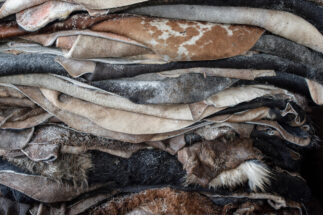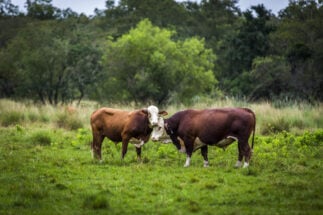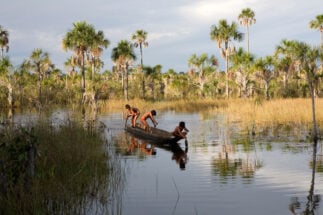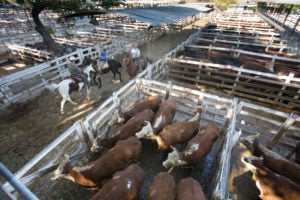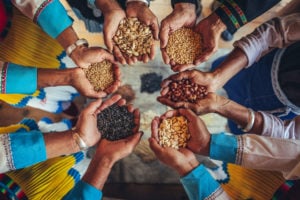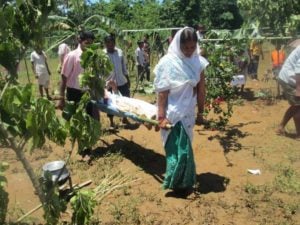Leather production is expanding in the Legal Amazon, the northwestern region of Brazil containing all nine states in the Amazon basin, official statistics reveal. However, the boom of activity in the region increases the risks to the already threatened tropical forest, experts warn.
The region has increased its participation in the Brazilian leather chain. In 2020, more than 23 million units of raw leather were acquired by tanneries, the factories that process skins. Of these, almost 10 million – or 43% – are in the Legal Amazon. In 2010, the proportion was 27%, and in 2000, only 7%.
This trend accompanies the shift in cattle ranching towards the north of the country. The herd in the region, which houses most of the biome, grew three times above the national average this year alone. “Leather follows the slaughter of cattle,” explains Maurício Bauer, WWF’s Director for Meat and Leather Supply Chains.
On the pastures, there is only one cattle-rearing chain; it is only in the slaughterhouse that the separation between meat and its byproducts, such as leather parts, occurs. Therefore, the problems are the same up to this point, for example, a lack of transparency in tracking the supply chain – that is, ensuring that animals are born and raised on farms that respect environmental legislation.
A number of reports and studies have shown that major brands are prone, and sometimes directly related, to the purchase of raw materials produced from animals raised on illegally deforested farms.
Around 80% of Brazilian leather is exported. China, including Hong Kong, is the largest importer, with more than 31% of purchases in 2020. But only 4.3% of exports in that period came from states of the Legal Amazon.
After the farm, the tannery
For decades, there was scrutiny on the environmental impacts of leather processing and the precarious working conditions in tanneries. For example, in the tanning process, chromium is added to prevent the leather from rotting, but as the substance changes state, it assumes polluting and highly dangerous characteristics.
According to Bauer, this process generated concern for decades, but today the issue can be considered resolved. “The tanneries have started to comply with environmental legislation. There has been a lot of evolution in this area of pollutants,” he said.
Manoel Jacinto, who researches leather at the Brazilian Agricultural Research Corporation (Embrapa), agrees: “It is very difficult for a tanning industry to install itself in a state and keep polluting without suffering fines. Currently, all tanneries need authorisation from the environmental agency.”
With these changes, issues around cattle tracking and origin have instead grown to become the biggest environmental concern linked to the leather chain, according to Bauer.
Cattle ranching is the main driver of deforestation in the Brazilian Amazon. According to Paulo Barreto, a researcher at Imazon, a non-profit promoting Amazon conservation, one of the incentives for this is the greater competition for land use in other regions. The Amazon, however, has an abundance of unoccupied land.
“Around 30% of the lands in the Amazon are public lands not destined for indigenous or environmental reserves,” said Barreto. “Then there is illegal occupation, which is the irregular occupation of these areas. The government has been very slow or unwilling to curb these practices. This generates cheap land, which encourages the advance over the forest.”
80%
of Brazilian leather is exported. China, including Hong Kong, is the largest importer
And tracing this chain is extremely complicated, explains Christina MacFarquhar of Global Canopy, which works on environmental tracking: “Between the first farm and the final retailer, there are usually several stages of leather processing and manufacturing by various companies in different countries. Production in Brazil can involve complex factors such as real estate speculation and corruption.”
MacFarquhar is one of the authors of a survey conducted in 2019 that identified 43 companies, from various parts of the world, that are “highly exposed to deforestation risk through the Brazil–China beef and leather trade”. According to the study, the process is so opaque that even buyers with commitments to reduce or end illegal deforestation may not know the origin of their products.
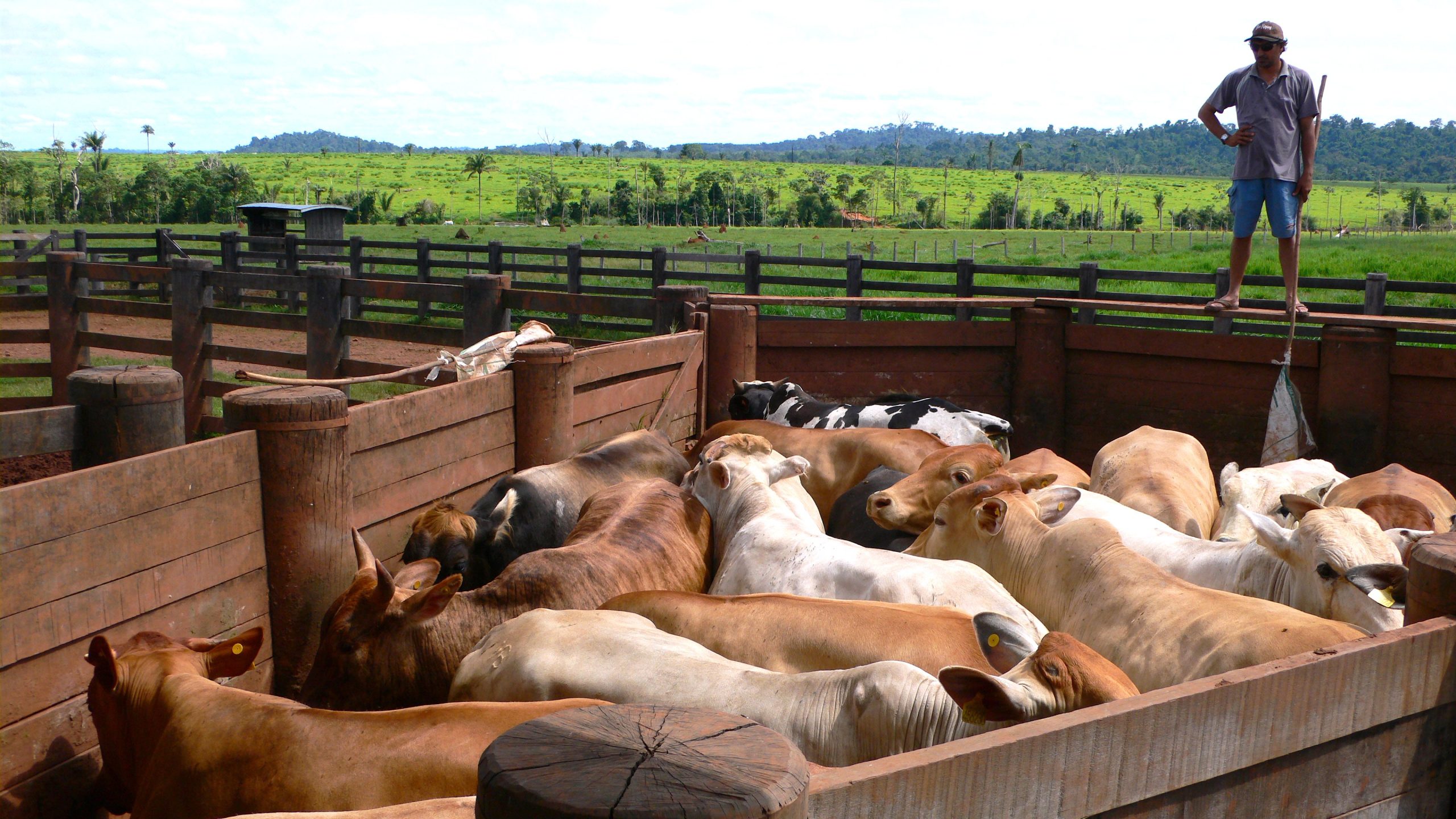
The leather production chain is globalised, and some of the companies based in China that obtain Brazilian raw material are American or European. The study identified 15 Western companies that make shoes, furniture and car seats, whose factories in China could source untraceable Brazilian leather, including BMW, Ford, Adidas, Ikea, and Macy’s.
Also found were 20 Chinese companies – including the robotics company Kuka, Belle International, China’s largest shoe manufacturer and retailer, and Adient PLC, an Irish car seat manufacturer with more than 40% market share in China – that are involved in the processing, manufacture and sale of beef or leather products in China.
Global Canopy urges that these Western and Chinese companies “put pressure on manufacturers in China to disclose and address their own risks in the production chain”.
Change in Chinese regulations
In September 2020, China’s first regulation on imported and exported leather products came into force in the country. The guidelines, issued by the China Leather Industry Association – and therefore not legally binding – do not mention traceability as a requirement.
Still, it sets requirements on quality and sustainability for leather. The standard states that Chinese producers “should actively comply with the requirements to improve and maintain the international image of the country’s leather industry”.
Did you know?
More than 23 million units of raw leather were acquired by tanneries, the factories that process skins. Of these, almost 10 million – or 43% – are in the Legal Amazon
According to Nathalie Walker, director of the National Wildlife Federation (NWF), most tanneries around the world do not yet have the information to assess whether source sites are in compliance with environmental standards. “But they could one day. It’s feasible,” Walker says.
The Leather Working Group (LWG), a group composed of leather industry entities that have been working to develop an environmental management protocol in the field, reports that of the 110 tannery exporters in Brazil, 65 receive the gold classification. Among them, however, traceability rates vary from 0% to 100%.
The organisation representing the sector, the Centre for the Brazilian Tanning Industry (CICB), did not respond to several requests for an interview.
Maurício Bauer states that “the leather sector in Brazil has, in general, a traditionally conservative character”, and that CICB “has the challenge of searching the balance in representing in an adequate way its more conservative members, and those more progressive” on the implementation of sustainable practices.
There are economic incentives for deforestation. Today the forest is worth more lying down than standing up
But the researchers believe the industry can catch up. Nathalie Walker says that buyers “still need to do a lot and we haven’t seen any real differences yet, but there is a willingness to make improvements”. She cites Embrapa initiatives to increase the number of cattle per hectare as a positive step.
Manoel Jacinto mentions the systems that integrate crop, livestock and forest in the same area, as an initiative that has gained momentum in recent years. The model “does not need to deforest, or remove woodland to produce livestock,” he said.
Maurício Bauer says that deforestation and incursions on the Amazon do not happen out of a contempt for nature. “There are economic incentives for this. Today the forest is worth more lying down than standing up,” he adds. “The Amazon has a population living in terrible conditions of poverty. There is a direct relationship between poverty and environmental preservation. And by reducing poverty, the incentives for deforestation are reduced.”
